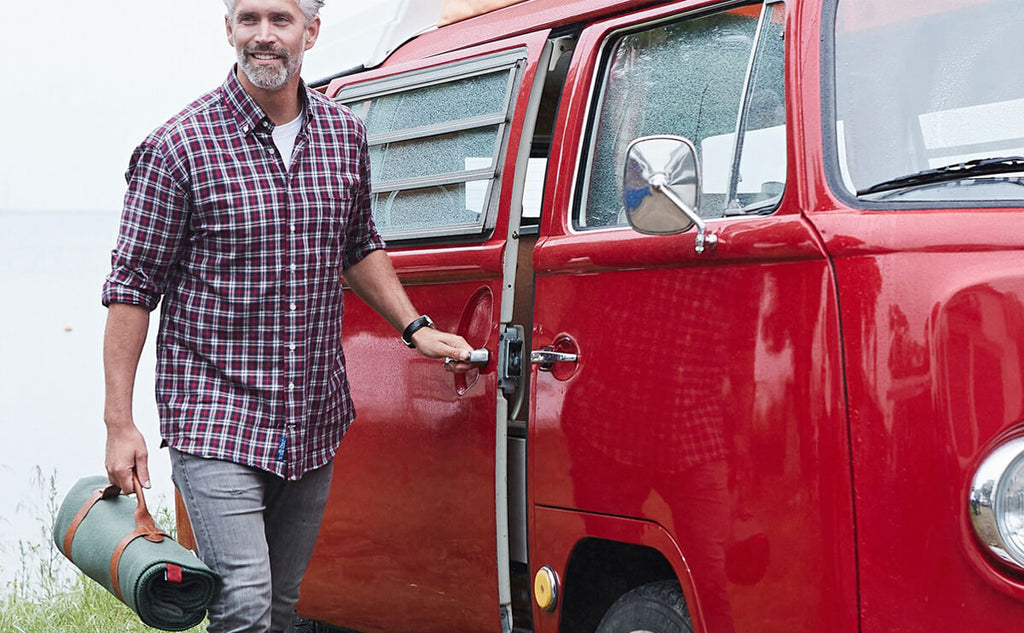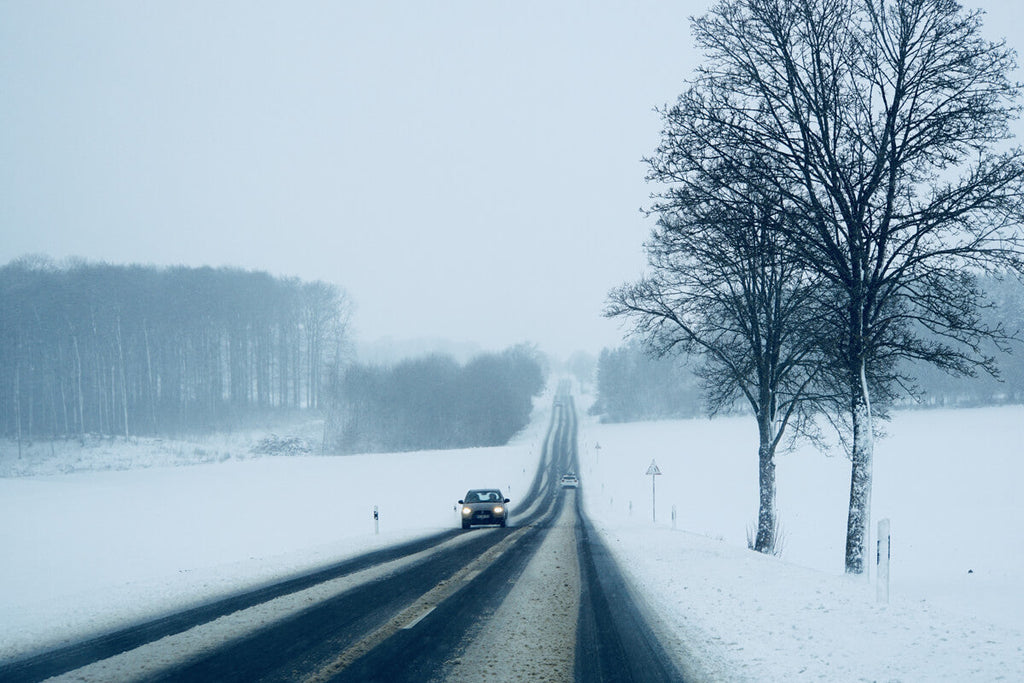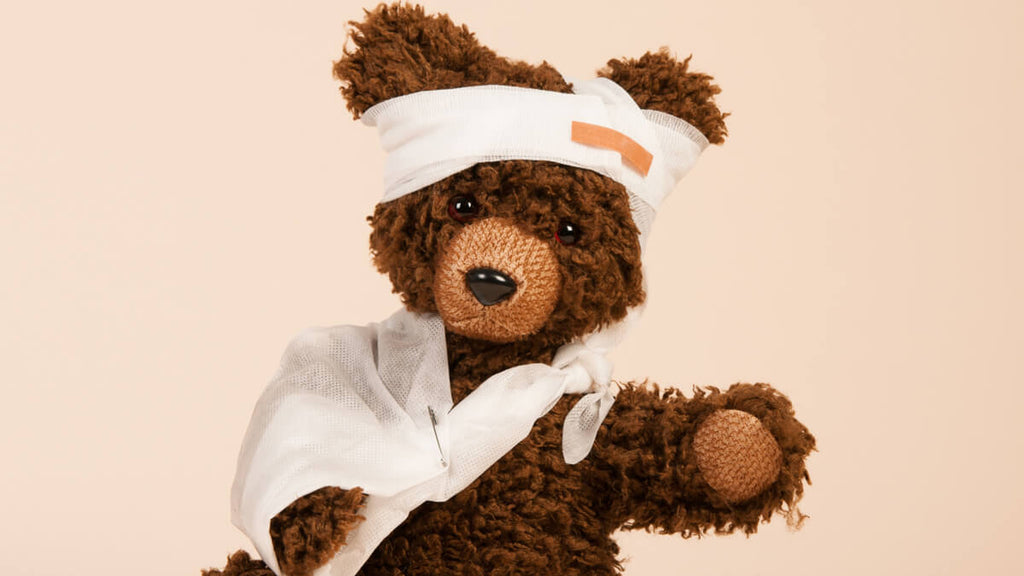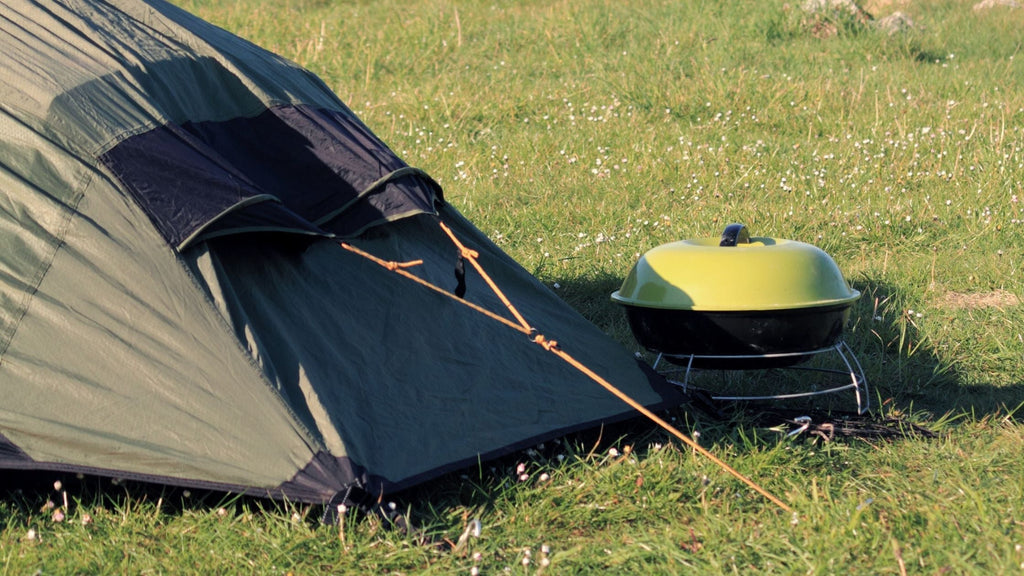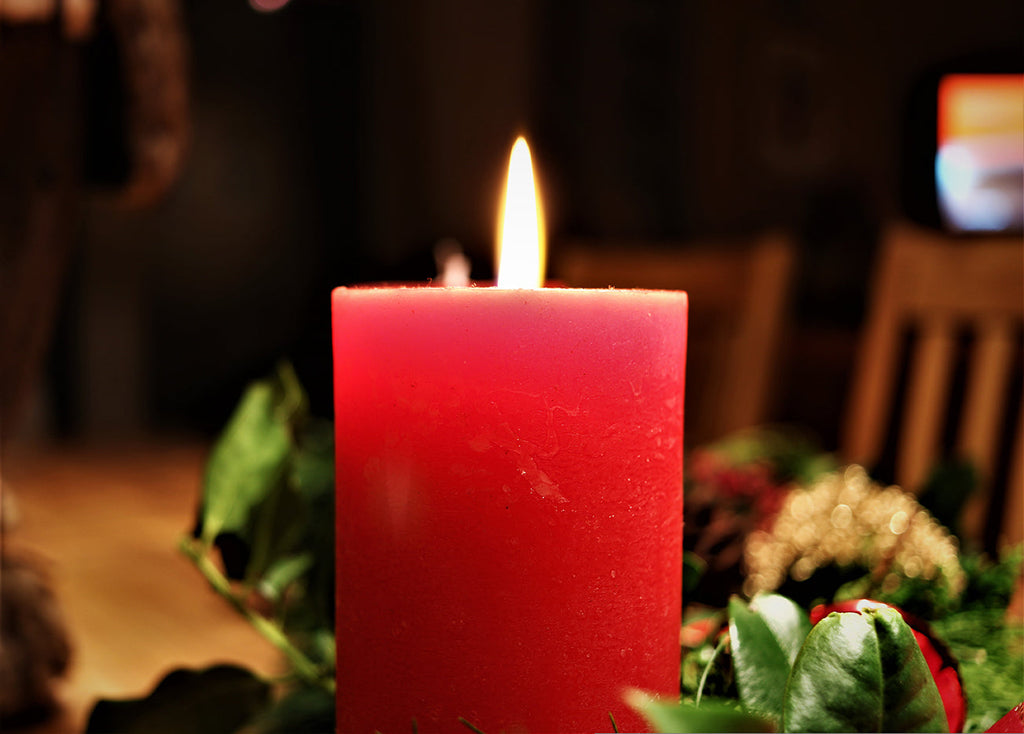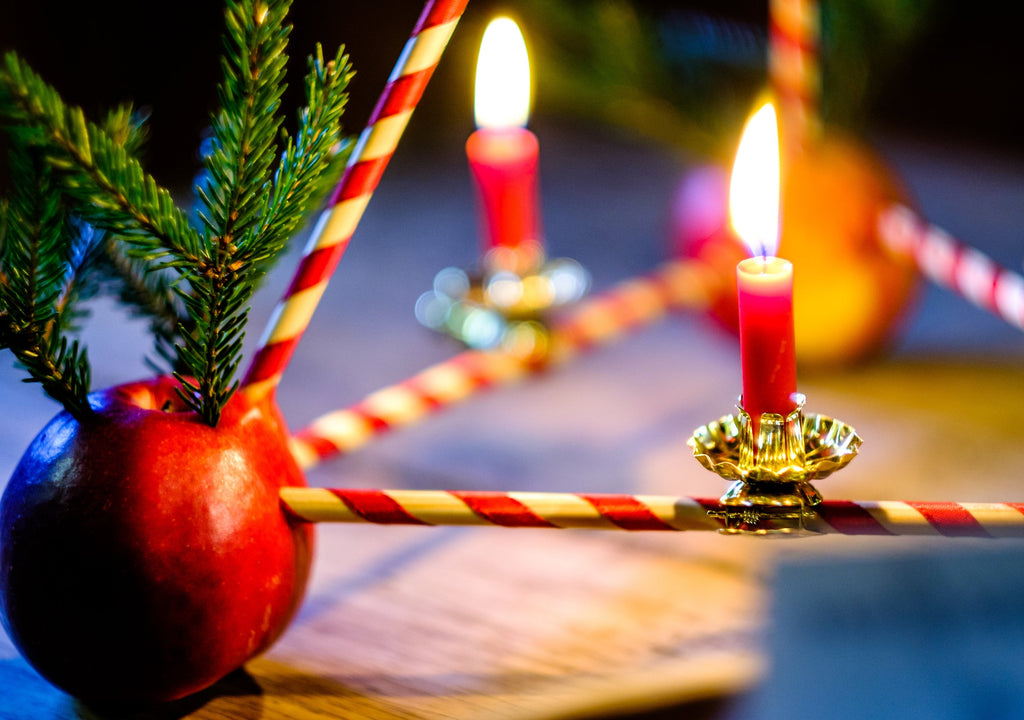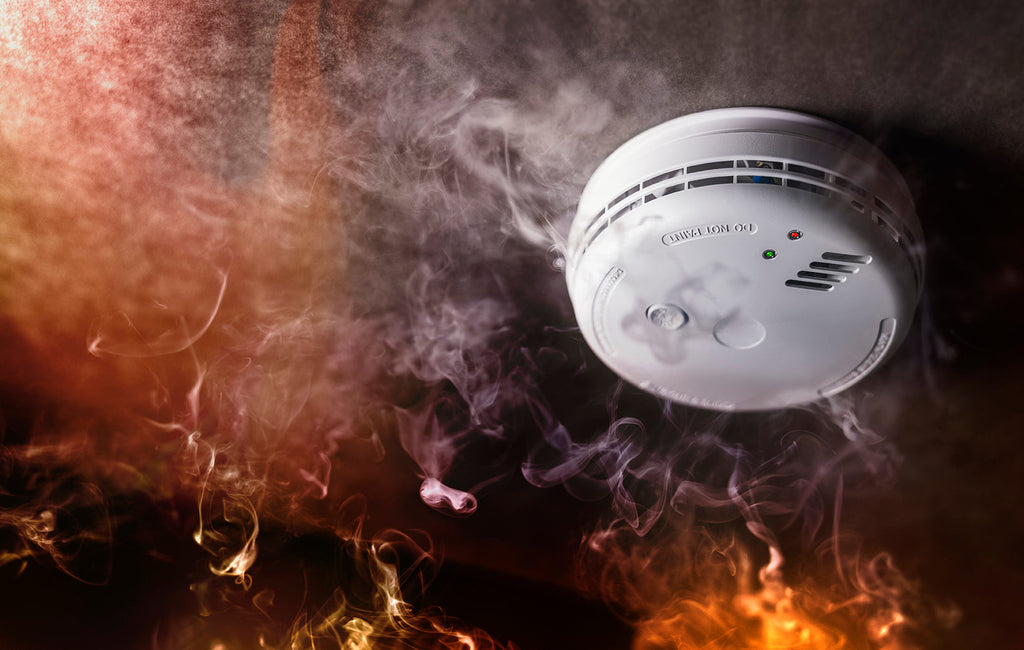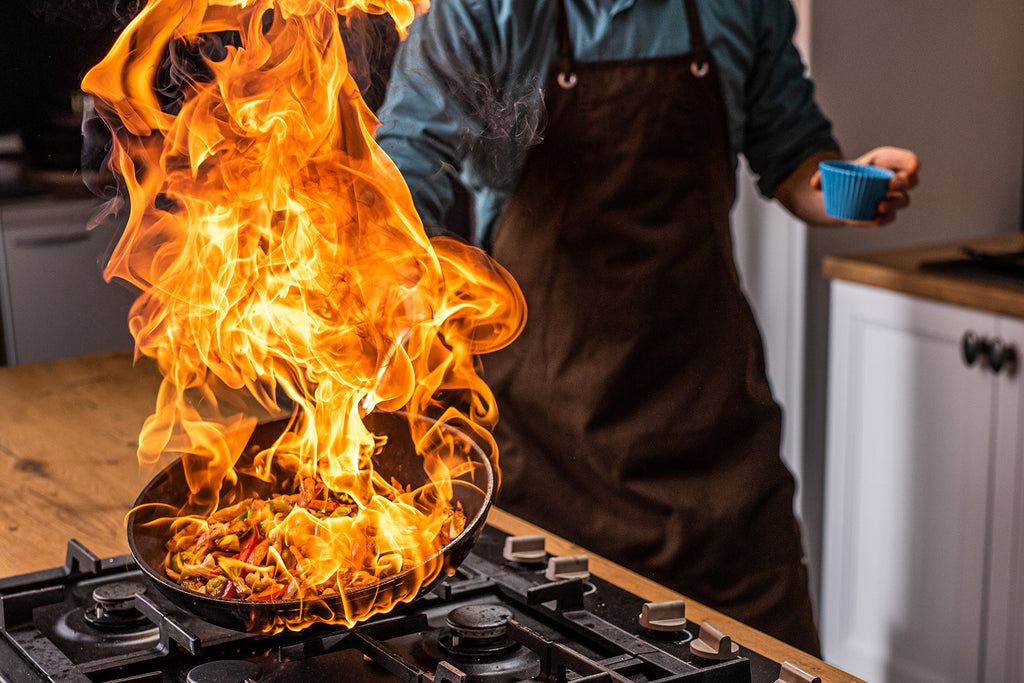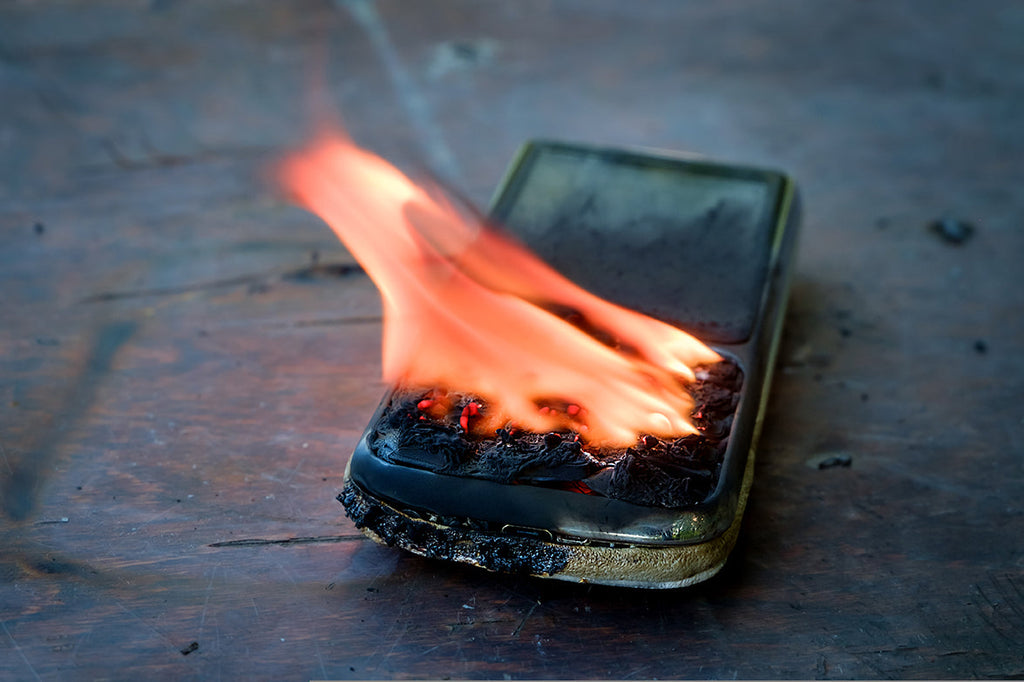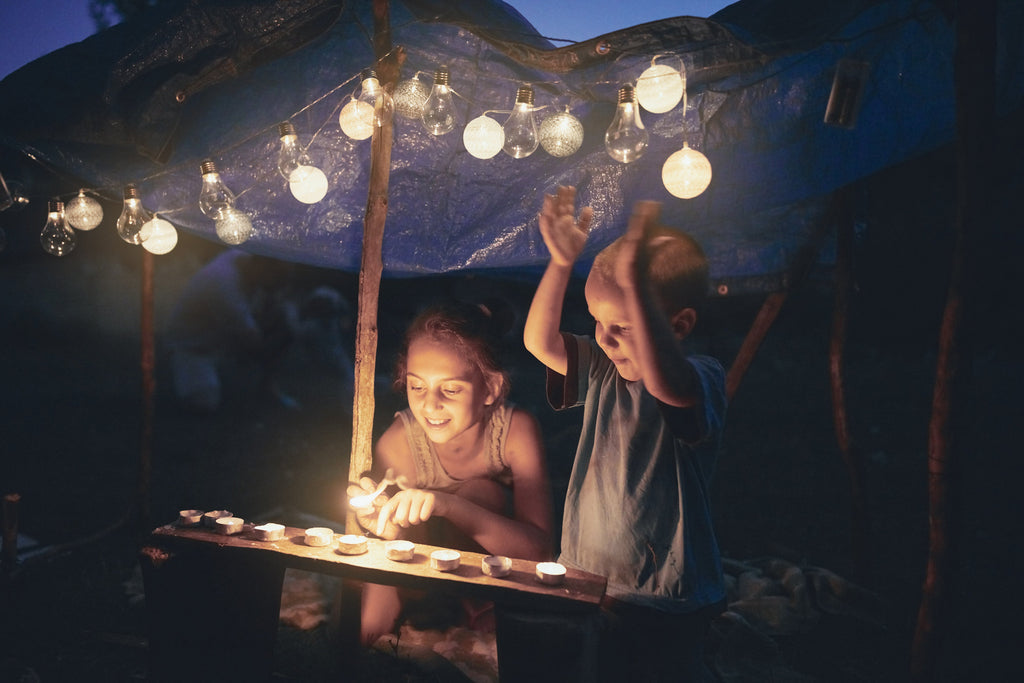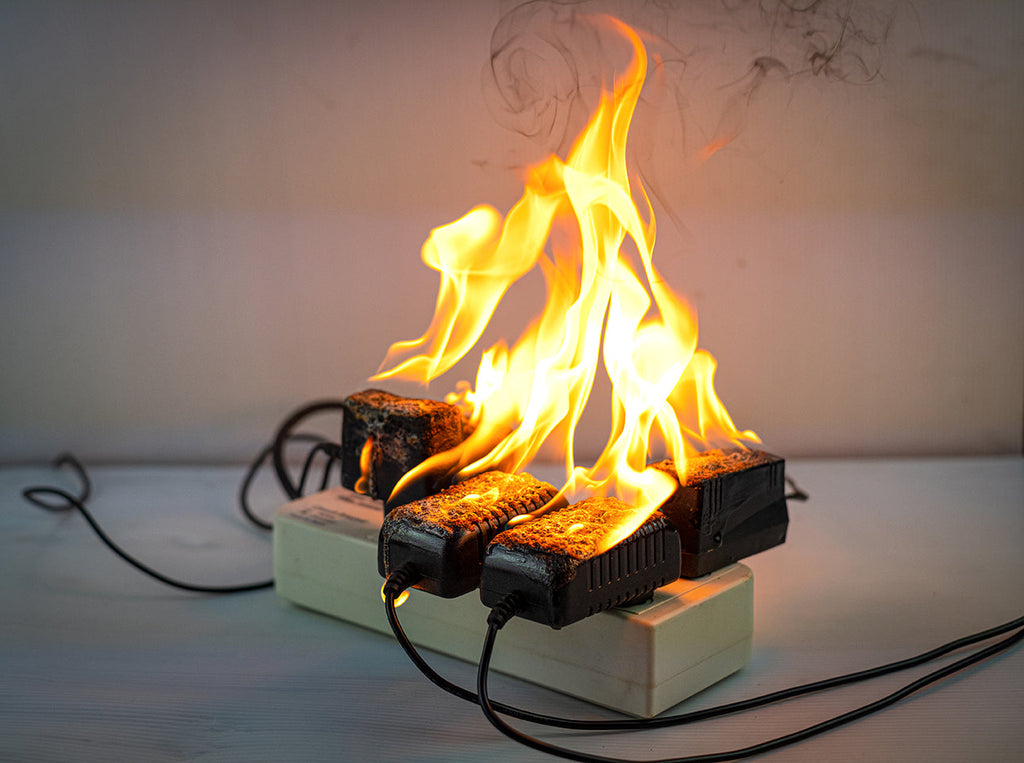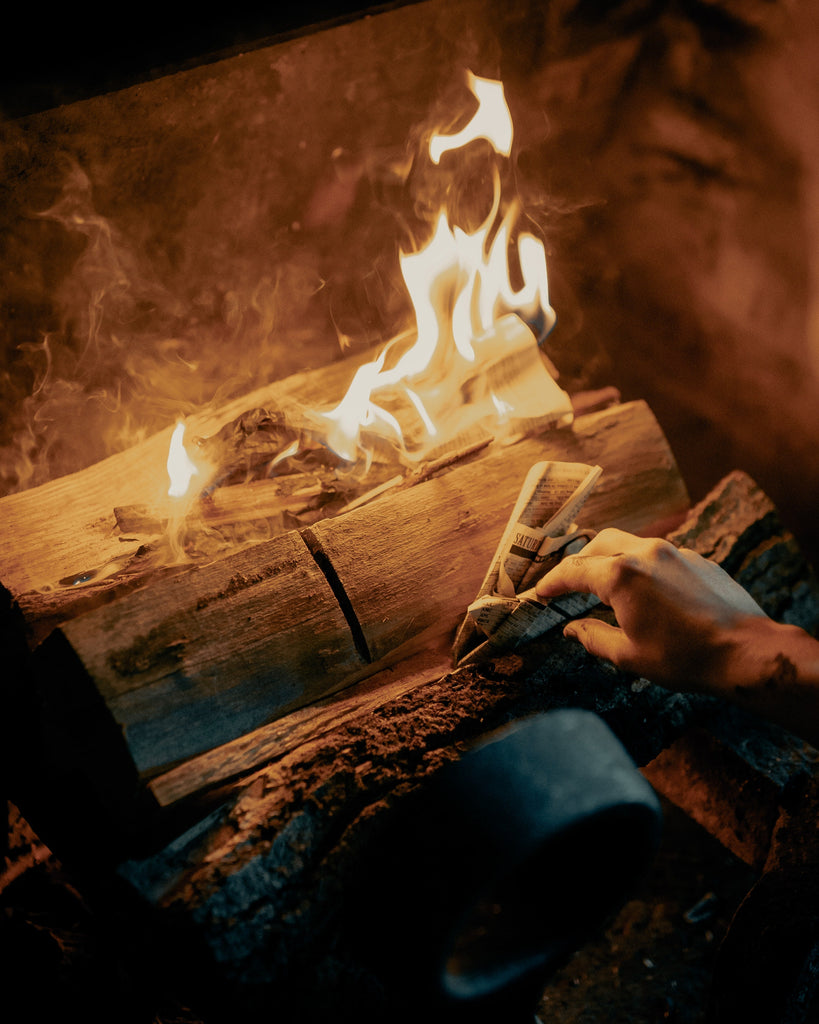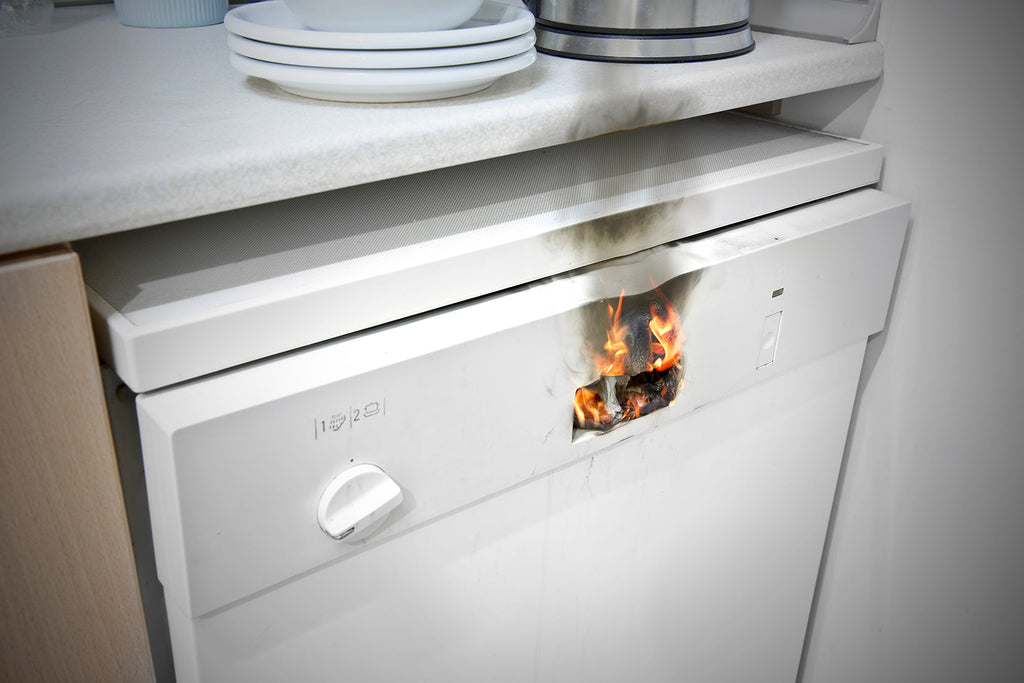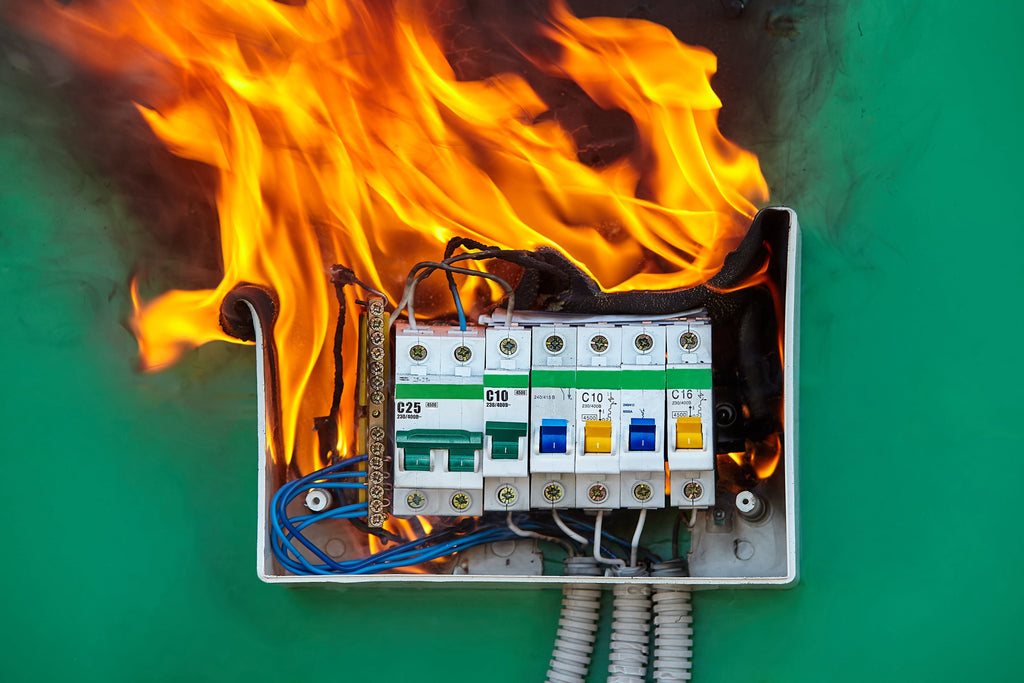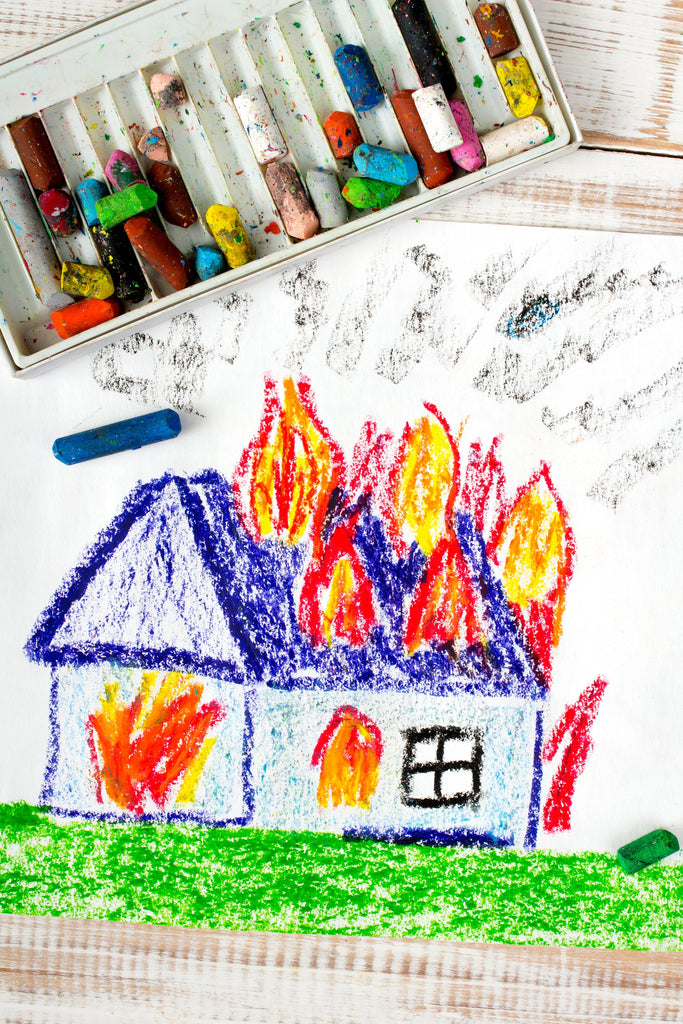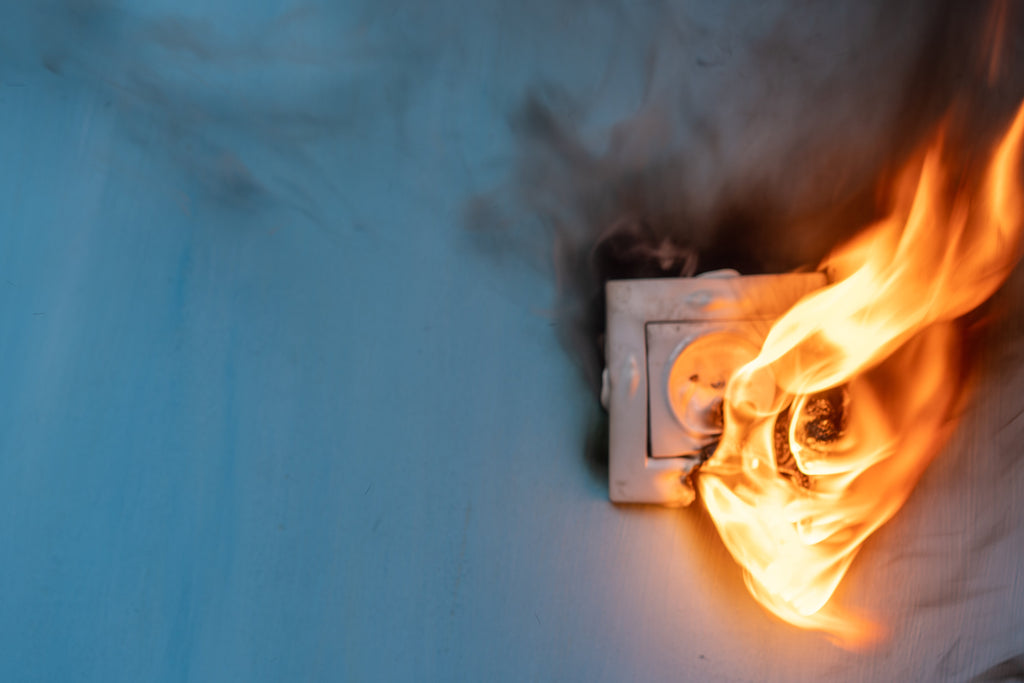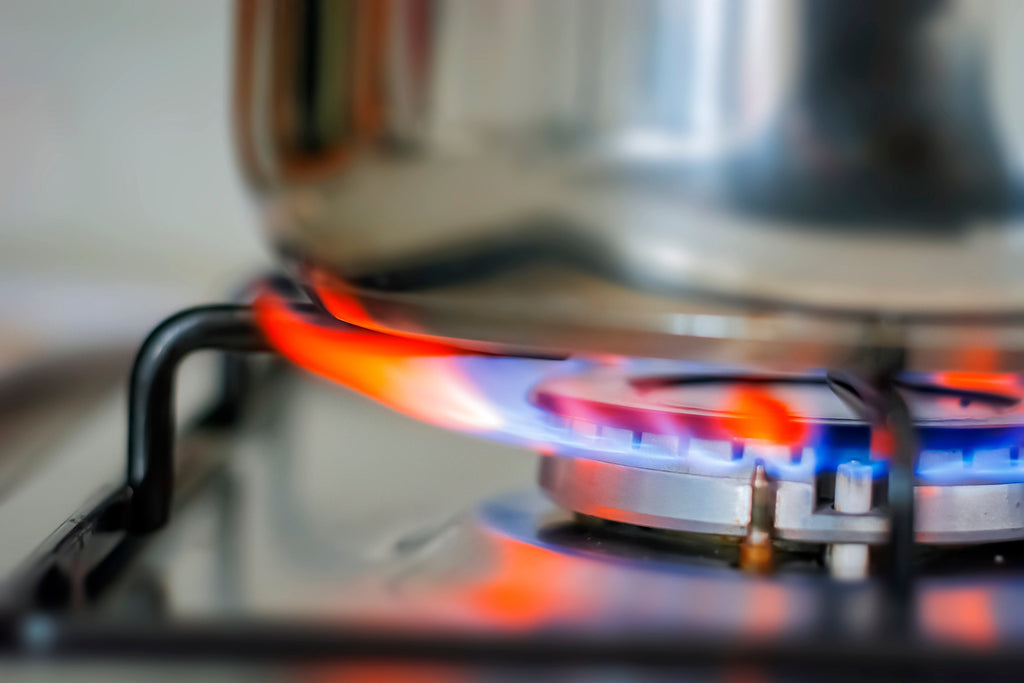Fire Protection
When most people think of fireproof blankets, they envision a tool for emergency situations—perhaps used by firefighters to smother flames or by outdoor enthusiasts to protect against the elements. However, fire-resistant blankets, also known as fire safety blankets or fire retardant blankets, offer a myriad of practical, everyday uses that go far beyond their initial function.
At Ask the Fox, we pride ourselves on offering high-quality personal protective fire blankets that combine safety with innovation, and we're here to show you how this humble yet powerful tool can improve your everyday life.
1. Protection of Delicate Surfaces in the Kitchen or in Case of a Grease Fire
The kitchen is a hotbed of activity, with ovens, stovetops, and hot pans everywhere. A fire safety blanket can be a game-changer here, providing an extra layer of protection for countertops, tables, or even your clothing. Imagine placing a hot pot directly onto the blanket, knowing it will withstand the heat without damage, while offering an easy-to-clean surface. This simple solution is a must for anyone looking to keep their kitchen safe while cooking up a storm.
A fire blanket is especially helpful in the event of a grease fire, as it smothers the flames without spreading the burning fat – unlike water, which would make the fire worse.
The blanket should be carefully placed over the burning pot or pan to cut off the oxygen supply, which causes the flames to suffocate.
It’s important to keep a safe distance and lay the blanket calmly and without sudden movements to avoid intensifying the fire.
2. A Heat-Resistant Mat for Outdoor Grilling
Summer barbecues and outdoor grilling sessions are synonymous with sizzling heat. Whether you're grilling burgers, cooking on a campfire, or using a portable stove, a fire retardant blanket can offer protection for your outdoor surfaces. Use it as a heat-resistant mat under your grill, stove, or fire pit bowl to prevent heat damage to your deck, table, or ground. This multi-purpose tool ensures that your outdoor spaces remain as pristine as ever, even after your cookout.
3. A Cozy Warming Layer for Pets
Fire-resistant blankets aren’t just for humans! Your pets can benefit from the warmth and protection these blankets offer. If you have a cold-weather pet, such as a dog or a cat, you can use a fire safety blanket as a warming layer in their bed. It's an excellent way to provide comfort and warmth to your furry friends during chilly nights, all while being fire-resistant for added safety.
4. Camping and Outdoor Adventures
If you love camping, hiking, or enjoying the outdoors, a fireproof blanket can become a staple in your gear. It can serve as an emergency fire suppression tool or act as a barrier against heat in case of sudden outdoor fires. Additionally, it works wonders as a heat-reflective ground cover when sitting around a campfire, helping you stay warm without compromising safety.
5. Home Fire Safety
While you may not face many fires in daily life, it’s always better to be prepared. Fireproof blankets provide an excellent way to ensure your home remains protected in case of an emergency. You can easily store them on your sofa, in the bedroom in your kitchen, in the kid‘ room or bedroom, near the fireplace, or in your car. In the event of a small fire, simply throw the fire safety blanket over the flames to snuff them out before they spread.
6. A Shield for Sensitive Electronics
Protect your electronics from potential fire risks by draping a fire-resistant blanket over sensitive devices. In the unlikely event of overheating, a fire retardant blanket can shield your electronics, including computers, televisions, and routers, offering you peace of mind and protecting your expensive equipment.
Why Choose Ask the Fox for Your Fire Safety Blankets?
At Ask the Fox, we offer the highest quality fire safety blankets designed to meet and exceed industry standards. Our personal protective fire blankets are made out of 100% PyroTex® that can withstand high temperatures, offering peace of mind whether you're using them in everyday life or emergency situations.
With our products, you’re not just purchasing a fire safety blanket—you're investing in a tool that blends convenience, versatility, and safety in every scenario. Whether for household use, outdoor activities, or fire emergencies, our fire-resistant blankets ensure you're always ready for anything.
Conclusion
Our fireproof cozy blankets are not just emergency helpers – they offer versatile uses that significantly increase safety and comfort in everyday life. Whether to protect delicate surfaces in the kitchen, as a heat source for pets, or as protection for your electronics – these blankets are practical everyday helpers.
Learn at Ask the Fox how these exceptional products can enrich your daily life.
Don't wait for an emergency to discover the benefits of fireproof blankets. Integrate them into your daily life – and enjoy the added safety, comfort, and peace of mind they provide.
Whether you're in a van, traveling, at the office, or on a short trip to a vacation rental – our cozy fireproof blankets are more than just something to snuggle up in. They are also an active statement for safety. When people think about fire protection, they usually think of their homes: smoke detectors, fire extinguishers, escape routes. But fires don’t care about permanent addresses. That’s exactly why we need fire protection "to go."
1. Why Fire Safety Shouldn’t Stop at Your Front Door
Every year, thousands of fires start on the go – in RVs, on campsites, in Airbnbs, or from cheap chargers in hotel rooms. Especially when traveling, people are often less prepared: no fire blanket, no plan B. The problem: in unfamiliar environments, the response time drops. Using familiar safety tools? Often not an option.
That’s why we want to show how easy it can be to combine fire safety with lifestyle – simple, stylish, and always within reach.
2. Common Fire Hazards That Often Go Unnoticed
| Situation | Typical fire hazard | Prevention |
|---|---|---|
| Camping or Vanlife | Gas stove, campfire, batteries | Use certified devices, clear the fire area, keep COSY FOX blanket handy |
| Hotel / Airbnb | Cheap power strips, old space heaters, gas stoves | Check plugs, unplug electronics overnight, inspect stove |
| Office or coworking | Chargers, paper piles, coffee machines running | Don’t leave chargers unattended, unplug devices |
| Train, plane, car | Power banks, USB heating pads, overheating devices | Avoid covering devices, check product quality |
3. Our Suggestion: COSY FOX Blanket = Your Fire Blanket "To Go"
Our COSY FOX blanket was designed for exactly these moments:
It’s soft, stylish, keeps you warm – but in an emergency, it protects you.
That’s because the needled fleece is made from 100% PyroTex® – a material that is flame-resistant, heat-resistant, and free from harmful substances.
What that means for you:
- It doesn’t replace a fire extinguisher – but it’s a smart addition.
- In an emergency, it can be used as a fire blanket, protective shield, or evacuation aid.
- And in everyday life? It just looks good.
We call it: Fire protection with function AND emotion.
4. What should your personal fire safety kit for the road include?
| Must-Have | Why it’s useful |
|---|---|
| COSY FOX Blanket | As a fire blanket, keeps you warm, and protective shield |
| Portable smoke detector | E.g., battery-operated mini smoke detectors for RVs / Airbnb stays |
| Lighter / Flashlight | For emergency lighting and orientation |
| List of emergency numbers | Absolutely essential when traveling abroad |
| Power bank | For light, phone, and navigation |
| First aid kit | Don't forget - includes fire ointment |
5. Travel Safety Starts in Your Mind – and in Your Luggage
"Fire safety to go" doesn’t mean traveling fearfully. It means traveling consciously. Those who take their safety into their own hands gain one thing above all: peace of mind. And that’s worth it when you're on the road.
Our motto: If you love your fireproof cozy blanket, take it with you – it might just save your life.
Conclusion: For everyone who wants to take more than just clothes
Whether you're a glamping enthusiast, a frequent business traveler, or someone who calls their camper a second home:
The COSY FOX blanket is your everyday hero – quiet, functional, and ready when you need it.
"Fire protection to go" is more than a trend. It’s a statement for a responsible, mindful lifestyle.
And hey – cuddling is always in style, no matter where you are.
Why a fireproof car blanket is more than just a “nice to have”
We all know car blankets: they keep you warm, protect the seats, or serve as picnic mats. But what if they could actually save lives? Fire-resistant car blankets are more than just seasonal comfort items – they’re an underrated, smart addition to enhance road safety.
Cars combine multiple risk factors: highway traffic jams, wildfires, batteries, electronics, technology, extreme cold or heat, and flammable materials like upholstery and luggage. And even though car fires are rare, they can become life-threatening within seconds. A fire-resistant blanket in your car isn’t alarmism – it’s modern preparedness. It can protect you, your family, or even other fellow drivers in a critical situation.
5 Reasons Why Every Vehicle Should Have a Fire-Resistant Car Blanket
| Reason | Description |
|---|---|
| 1. Mobility + Safety | A fire-resistant blanket offers double protection on the road: it keeps you warm and helps in emergencies like small fires or breakdowns. |
| 2. Instantly Accessible | No searching needed: keep it in the trunk, on the back seat, or rolled up under a seat – always ready when needed. |
| 3. More Than Fire Protection | In case of an accident, it keeps injured people warm, serves as a roadside signal, or works as a protective mat during a tire change. |
| 4. Child Safety | Families with young kids benefit even more: the cozy blanket protects during play, sleep, or in emergency situations like an overheated car. |
| 5. Sustainable Alternative | Many standard car blankets contain polyester – which is highly flammable. ASK THE FOX uses PyroTex® instead: a fiber that withstands heat and flames without releasing harmful substances. |
Use Cases: Practical Every Day – Invaluable in Emergencies
Winter Breakdown on a Country Road
Waiting for roadside assistance? The engine is off, and it’s getting cold. The fire-resistant blanket keeps you warm without running the engine (which would add fire risk).
Smoke Coming from the Engine Bay
Before firefighters arrive: grab the blanket, slightly open the hood, and lay it over the area – helping to suppress a starting fire.
(Important: this doesn’t replace a fire extinguisher, but it can help prevent escalation – especially when no extinguisher is available.)
Securing an Accident Scene
Use it for privacy, to warm the injured, or as a seat on hot asphalt. If an e-bike or e-scooter battery starts smoldering, you’ll have something to safely cover it – without melting plastic.
Winter Traffic Jam on the Highway
Hours of standstill in sub-zero temperatures. The engine stays off to save energy. Our blanket keeps you warm – without electricity or risk. It insulates reliably, is breathable, and even offers heat protection in extreme situations.
Picnics, Road Trips, or Camping
Whether at a rest stop, a festival, or during a break: the COSY FOX blanket is soft enough to keep you warm – and tough enough to protect you from campfire sparks.
Smoke Inside the Vehicle
Caused by a short circuit, faulty seat heating, or power bank issues? The COSY FOX blanket can help contain small fires and protect your skin and airways as you exit the vehicle.
Kids Fall Asleep – You Relax
No itching, no sweaty synthetics. Just natural coziness – with built-in safety. Perfect for naps on the go or cuddly moments during long drives.
ASK THE FOX On the Road: The Fire-Resistant Blanket for Your Car
Our blanket doesn’t just make your home cozier and safer – it belongs in your car too. Why?
- It rolls up compactly and fits in any side panel or under the back seat.
- It’s stylish, making it suitable as a picnic or travel blanket.
- It’s made from 100% PyroTex® – a proven material that withstands high temperatures while remaining soft.
In short: the COSY FOX blanket for your car isn’t a gadget. It’s a statement – for responsibility and for style.
Conclusion: One Blanket, Many Uses – Especially When It Counts
Thinking about a car fire is uncomfortable – which is exactly why it’s often ignored. But safety doesn’t have to be unattractive. Our fire-resistant car blanket is an elegant, smart way to bring a piece of responsibility on the road. For you, your loved ones, and the peace of mind of being prepared.
“Safety doesn’t have to look like danger – it can be soft, warm, and beautiful too.”
"Less is more" – it’s long been more than just an aesthetic statement. It’s a mindset. In a world overwhelmed by stimuli, the longing for clarity, calm, and things that truly matter is growing.
The Appeal of Simplicity
Minimalism reflects a lifestyle that emphasizes real values. Its aesthetic lies in authenticity and purity. It stands for restraint and timelessness – and incidentally conserves resources. High-quality craftsmanship in that respect is no contradiction, but rather part of the concept. This elegant purism is made possible by new developments: smart products that combine fireproof design with minimalist living culture. The principle: less – with added value.
Form Follows Function. And Safety.
Reduction today doesn’t mean sacrificing quality or protection. On the contrary: thoughtful design embraces durable materials – with superpowers.
Fire resistance is one of them. After all, what good is the most beautiful interior if it can’t offer protection in an emergency?
The COSY FOX throw blanket was developed with this in mind: pure in appearance, versatile in use. Aesthetic enough for the living room, tough enough for emergencies.
Function with Purpose
In collaboration with designer Kerstin Bante, a blanket was created that doesn’t just relate to minimalist design – it embodies it: clean lines, neutral colors, no loud patterns. And yet it makes a statement. In 2023, the ASK THE FOX blanket received the German Design Award – proof that fire safety can also be beautiful.
Less Clutter, More Clarity
Minimalism also means: fewer potential fire hazards. No unstable lamps, no tangled string lights, no textiles that catch fire at the slightest spark.
At ASK THE FOX, we believe: conscious interior design means safer – and more beautiful – living.
The future of home living is reduced. But not unprotected.
Your home is your safe space. Make it cozy – with a blanket that does more than just look good when it counts.
- Hot Liquids & Foods – Spilled tea or coffee, hot soups, or porridge can cause scalds quickly. Water at 60°C can cause serious injuries in just a few seconds.
- Stove & Oven – Children are curious and might touch hot stove plates or the oven door.
- Iron & Hair Dryer – These devices often stay hot for a long time after use and are easily accessible to children.
- Candles, Matches & Lighters – Little children are fascinated by flames and may reach for them.
- Power Outlets & Electrical Devices – A faulty hairdryer or a plugged-in charging cable can cause dangerous electrical burns.
- Sunburn – Excessive UV exposure is also a burn, which can be especially dangerous for babies.
- Fireworks & Sparklers – Even small firecrackers or sparklers can cause severe burns.
- Keep hot drinks & food out of reach – Never place cups on tablecloths or coffee tables.
- Install stove guards & turn pots to the back – This prevents children from accidentally touching a hot pot or pan.
- Make the bathroom safe – A scald protection for the shower or bathtub prevents water that’s too hot. The ideal temperature is a maximum of 37°C.
- Put away electrical devices after use – Don’t leave curling irons, straighteners, or irons unattended.
- Childproof electrical outlets – Special outlet covers prevent children from inserting objects.
- Store lighters & matches securely – They should never be in the hands of children.
- Take sun protection seriously – Babies should not be exposed to direct sunlight. Use UV clothing and sunscreen with high SPF.
- Explain fire safety playfully – Even toddlers can learn that "hot" is dangerous.
- Stay calm and reassure your child – Your child will sense your panic, so take deep breaths.
- Remove clothing, but only if it’s not stuck to the skin!
- Cool with lukewarm water (about 20°C, not ice cold!) – At least 10 minutes under running water. Ice or cold water can cause further damage to the skin.
- Unusual but effective: Urine – Urine contains urea, which cools and protects the skin. For contact burns (e.g., from hot water or an object, but no open wounds), fresh urine can be applied for 15–30 seconds. Important: Urine is only effective if applied immediately after the burn. Clean the area with lukewarm water afterward. Post-application is ineffective. For more serious burns, always seek a doctor!
- Don’t use home remedies! – Butter, flour, or toothpaste will only worsen the wound.
- Cover with sterile dressings – A burn should be covered with a sterile compress or, if necessary, with cling film.
- "Cold water always cools effectively." – Water that's too cold can cause hypothermia and interfere with the healing process.
- "Ice or cooling compresses relieve the pain." – Ice can cause frostbite and further damage the skin.
- "Cover wounds with a bandage." – Dry bandages can stick to the wound and delay healing.
- "Open burn blisters for faster healing." – Blisters protect the wound from infection and should not be opened on their own.
- "Home remedies like butter or flour help." – These substances worsen the wound and promote infections.
- Fire-extinguishing cuddle blanket – Safety meets comfort.
- Sustainable materials – Our blankets are made from PyroTex® fibers, which are free from harmful substances.
- Prevention as a lifestyle – Safety can be stylish and practical.
Well Prepared for the Festive Season
The “great days” are just around the corner! Whether it's a Fastnacht session, a private party, or the grand carnival parade—wherever celebrations take place—both small and large hazards may be lurking. To help you safely navigate the fifth season, we have compiled twelve simple yet effective safety tips.
- Do not wear masks or costumes made of highly flammable material. When purchasing streamers and garlands, look for fire-resistant products. You can identify them by the “B1” marking.
- When decorating your party room, do not place decorative materials in close proximity to light bulbs, heaters, candles, or other hot objects.
- Be cautious with open flames in decorated spaces. Arrange candles and lanterns in a way that keeps them safe from the revelry.
- Provide ashtrays and dispose of their contents only into metal buckets.
- Clearly mark emergency exits and ensure they remain unobstructed.
- Keep fire extinguishing equipment handy: fire extinguishers, fire blankets, or buckets of water.
- Inform yourself in advance and during the event about the weather conditions. Smartphone apps like NINA or KatWarn are just as useful as the German Weather Service app.
- Even though the chase for “Kamelle” and other thrown items can get intense—maintain a safe distance from parade floats. Pay special attention to children!
- Enjoy alcohol in moderation. Accidents and illnesses caused by intoxication are the most common reasons for emergency medical services deployments at festive events—such as falls resulting in cuts from broken glass.
- Park responsibly and keep emergency routes clear!
- Many fire departments volunteer to help manage and secure carnival parades. Please support these emergency personnel by not interfering with their work.
- Whether it’s a fire, traffic accident, or a medical emergency: alert the fire brigade by dialing the free emergency number 112.
Summer is the perfect time for festivals, and many festival-goers love barbecuing at the campsite to enjoy delicious food and share good vibes. Barbecuing at festivals has become a popular trend, offering more than just cooking. In this blog post, you'll learn why barbecuing at festivals is a highlight, which types of barbecues are allowed, and how to have an unforgettable yet relaxed experience by following simple safety precautions. Plus, we’ll introduce you to an innovative product that will take your festival safety to the next level!
Why barbecue at festivals?
Barbecuing at festivals offers numerous advantages that make the experience even more enjoyable. Here are a few reasons why you should definitely barbecue at your next festival:
Coming together
Barbecuing brings people together and creates a warm atmosphere. Whether with friends or fellow festival-goers, the shared experience of preparing and enjoying food strengthens the sense of community and makes the festival even more special. It's a time for swapping stories, making new connections, and creating unforgettable memories.
Freshness and variety
When barbecuing at festivals, it's important to have a balanced selection of foods that are both fresh and durable. Here are some tips to make your festival meals diverse and healthy:
Fresh animal-based products:
If you don't want to miss out on fish and meat, check ahead for nearby supermarkets or plan these items for the first day. They taste best when fresh and it helps to avoid health risks.
Long-lasting foods for multiple days:
- Vegetables: peppers, zucchini, eggplant, and carrots stay fresh for several days.
- Sweet potatoes: Pre-cut, they last long and are great for barbecuing.
- Chickpea or lentil balls: convenient, long-lasting, and can be easily barbecued, also making it a good meat substitute.
- Pita bread or tortillas: these are durable and can be easily barbecued as sides or bases for dishes.
- Halloumi cheese: this cheese stays fresh for days and is perfect for barbecuing.
- Canned goods: veggies like corn or beans are practical and long-lasting, ideal for complementing fresh ingredients or barbecuing.
Cost efficiency
Barbecuing can often be more cost-effective than buying meals at festival stalls. With a little planning, you can bring fresh ingredients and save money. Plus, shopping and cooking together with friends adds to the fun.
Flexibility and Creativity
Barbecuing at festivals gives you the freedom to experiment with different recipes. Try new marinades, prepare unique dishes, and improvise as you go. This flexibility makes festival cooking exciting and diverse.
Sustainability
Barbecuing helps reduce packaging waste since you are using fresh ingredients instead of prepackaged products. By using reusable barbecue tools and containers, you contribute to minimizing waste at the festival grounds. Sustainable barbecuing is not only eco-friendly but also leaves you feeling good!
Independence from festival schedules
Food stalls often have limited opening hours or get crowded during peak times. With your own barbecue, you can cook whenever you are hungry. This flexibility allows you to enjoy your meals on your schedule.
What types of barbecues are allowed?
Festival barbecuing regulations can vary, but these are the most common types typically allowed:
- Gas: easy to use with good temperature control. Ensure your gas barbecue is in good condition, with no leaks, and store gas bottles upright.
- Charcoal: popular and affordable. Set up securely and keep a safe distance from flammable materials. Safely dispose of any leftover coals.
- Disposable grills: convenient for single-use. Use only in designated areas and ensure the coals are completely out before disposing of them.
- Electric: Safe and smoke-free. Ensure a stable power source and be aware of any potential electrical hazards.
Always check your festival's specific guidelines to confirm which type of barbecue is permitted. Safety precautions are essential for a safe barbecuing experience.
Safety Precautions
Safety is crucial when barbecuing at festivals. Here are some important tips:
- Keep a safe distance: always set up your barbecue away from tents, trees, and other flammable materials. A minimum distance of 3 meters is recommended.
- Supervision: never leave the barbecue unattended, especially around children and pets.
- Extinguishing tools should be ready: always have an extinguishing tool like water, sand, or a fire blanket nearby. A fire blanket can quickly smother small fires in an emergency.
Our product recommendation: The Fireproof Cosy Blanket from ASK THE FOX
Did you know that our COSY FOX blanket is not only cozy but also doubles as a fire blanket? This multifunctional blanket is made from 100% PyroTex®, a specially developed flame- and heat-resistant fiber. This way, you can stay safe during the festival while also having a stylish and comfortable accessory. In an emergency, you can use the blanket to smother small fires, ensuring your safety and that of your friends.
Delicious recipe ideas
A festival barbecuing adventure wouldn’t be complete without some tasty recipes. Here are some simple and delicious ideas:
- Vegetarian skewers: with a selection of vegetables like peppers, zucchini, and mushrooms, marinated in a flavorful sauce.
- Classic burgers: with homemade patties, fresh buns, and your favorite toppings.
- Barbecued pineapple: a sweet treat that’s easy to make and the perfect dessert.
Conclusion
Barbecuing at festivals has many benefits, from fostering a sense of community to enjoying fresh and varied foods, and being independent of the often overpriced and unhealthy festival snacks. With the right preparation and adherence to safety guidelines, you can make the most of your festival experience while staying safe and eco-conscious. And with the COSY FOX blanket from ASK THE FOX, you’re not only stylish but also safe. So pack your gear, grab your barbecue, and enjoy your next festival to the fullest!
Have you ever wondered where you should store your fire extinguisher or fire blanket? Maybe you've tucked them away in the storage closet, along with those old boxes, vacuum cleaners, and all the things you rarely use. It's a common mistake many people make, especially in homes where space is limited.
Here's the problem with that: emergency equipment like fire extinguishers or fire blankets need to be quickly accessible in case of an emergency. If they're buried in the "closet of doom," their effectiveness is obviously significantly reduced.
The space problem in small apartments
In many homes, especially in urban areas, space is a precious commodity. Especially storage space is limited, and it's easy to stash away items that aren’t used daily. The storage closet often seems like the perfect solution – until you realize that in an emergency, you need to access these items in a flash.
Fire extinguishers or fire blankets are prime examples. They are essential tools for extinguishing a fire in its early stages and preventing greater damage. Imagine, though, you are in such a stressful situation and first have to dig through a pile of items before you can even find the fire extinguisher or blanket?
In an emergency every second counts, and a poorly placed fire extinguisher or fire blanket could be the difference between a small fire and a disaster.
Storage Closets: Not the right place for emergency equipment
The storage closet is often seen as a place where everything we rarely use finds a temporary home – bicycles, winter clothing, or even the fire extinguisher and fire blanket. But the truth is, emergency equipment deserves a spot in our home that is easily accessible and visible. A place that allows us to act immediately when every second matters.
Consider the kitchen, the most common place for household fires. Would you really want to waste precious minutes running away from the source of the fire, down the hallway, and frantically searching for your fire extinguisher or blanket? Or wouldn't it be better to have this life-saving equipment exactly where it's most likely to be needed?
The Solution: Functionality meets everyday Practicality
This is where the Ask the Fox Blanket comes in.
A fire blanket which at the same time is as a cozy blanket offers an innovative solution to the space problem. Imagine having a blanket that fits just as comfortably in your living room as any other blanket, but with one crucial difference: it can serve as a life-saving fire blanket in an emergency.
Our blanket combines the functionality of a traditional fire blanket with the comfort and aesthetics of a normal blanket. It's a solution that brings both safety and style into your home. In everyday life, it serves as a cozy blanket to snuggle up with on the couch, but in an emergency, it's immediately at hand, ready to extinguish small fires and increase safety in your home.
Why this matters to you
It's not just about safety – it's about rethinking how we handle emergency equipment. By integrating safety products into our daily lives instead of banishing them to the "closet of doom," we create a home that’s not only beautiful but also safe.
Imagine how reassuring it would be to know exactly where your fire blanket is in an emergency – right next to you on the couch or at the foot of your bed. This awareness and preparedness can make a huge difference in the event of a fire.
Conclusion
At first glance, the storage closet might seem like the ideal place to store things that aren't needed every day, but it's definitely not the right place for emergency equipment. By using innovative solutions like our cozy blanket with built-in fire extinguishing functionality, we can make more efficient use of space while increasing safety. Take the first step toward a safer home – and ensure that in an emergency, you're not searching through the closet of doom but are ready to act immediately.
Trust in your safety without compromising on comfort or style. After all, your home should be a place not only of relaxation but also of security.
With the start of the advent season, we get comfortable and let the aroma of coffee and freshly baked cookies fill the air.
As we look at the burning candles on The Advent arrangement, we are immediately filled with a festive joy.
But beware: Pine greenery ignites like tinder, especially after a few days when the arrangements have dried out.
ASK THE FOX provides 12 tips for handling Advent arrangements and Christmas trees to ensure that the Christmas season remains to be a time filled with joy and personal and property damages are avoided:
- Keep escape routes such as windows, doors, hallways, and stairs clear
- Never leave burning candles unattended.
- Avoid using flammable candle holders.
- Ensure sufficient distance from all flammable materials, such as curtains and drapes. Avoid drafts.
- Set up arrangements and Christmas trees firmly and securely.
- Only use non-flammable tree decorations.
- Use safety candles. The wick that ends in front of the candle base extinguishes the flame.
- Store matches and lighters in a safe place.
- In households with children and pets, electric candles are recommended. They should comply with VDE regulations.
- Do not overload electrical sockets with Christmas lights. And Ideally, don't leave electrical light chains on in your absence.
- Sparklers do not belong in Advent arrangements or Christmas trees.
- Be prepared: Keep a fire blanket, a fire extinguisher, or a bucket filled with water within reach in case of a fire.
In case of a fire, immediately call the fire department’s emergency hotline number. Stay calm, leave the room with the fire, and close the door. Instruct the fire brigade and have the keys to your apartment ready.
Joyful celebrations, colorful lights, and Christmas trees are a must have during the holiday season, but they also come with fire hazards.
In fact, fire departments report an increase in residential fires during the holidays.
So, how can you enjoy the holiday season while keeping fire risks at bay?
In this post, we will talk about fire safety during the festive season.
Safety Around the Christmas Tree
Here are some safety tips for Christmas trees:
- Opt for a healthy, fresh tree with green needles when possible. Remember that dry and flammable trees shed needles upon touch. Alternatively, you can use an artificial, fire-resistant tree.
- Place your tree in the right spot. Position your Christmas tree at least one meter away from heat sources like fireplaces, heaters, candles, and lights.
- Also, ensure your tree doesn't block exits.
- Water your tree daily. Christmas trees that aren't watered daily are more susceptible to catching fire compared to well-watered trees.
Safety with Christmas Decorations
- Taking a few precautions can also ensure safety with Christmas decorations: Inspect decorations before use. Check your decorations for damage or frayed wires before plugging them in. Discard damaged decoration elements as they pose an electrical hazard.
- Choose the right lights. Use lights that are tested and certified by a laboratory. Opt for LED lights, which are more energy-efficient and less prone to overheating.
- Don't overload outlets. Never plug too many decorations into a single outlet. Keep in mind that overloaded outlets can overheat and cause fires.
- Enhance Candle Safety
- When using wax candles, consider these tips:
- Avoid placing candles near combustible materials.
- Keep burning candles at least one meter away from anything that can catch fire.
- Ensure candles are in stable holders and can't be easily knocked over.
- As an alternative, consider using LED candles.
- Place candles on a non-flammable surface. Set burning candles on a non-flammable surface that can catch melting wax, such as a tray lined with aluminum foil.
Safety While Cooking
Here are some cooking safety tips:
- Keep your kitchen clean. Grease fires are a common cause of kitchen fires. Clean up spilled grease and crumbs immediately to prevent fires. Also, keep your cooking area clutter-free to minimize the risk of fire.
- Don't leave cooking unattended. Never leave cooking or baking food unattended. Use a timer to remind you when to check on the food after cooking.
Safety Around the Fireplace
Here are safety tips for fireplace owners:
- Keep flammable materials – from wrapping paper to decorations and curtains – at least one meter away from your fireplace or hearth.
- Use a fire screen. Place a fire screen in front of your hearth or fireplace to prevent embers and logs from escaping and to keep children a safe distance from the fire. Make sure to fully extinguish the flame before going to bed.
Fireworks Safety
And finally, some tips for handling fireworks:
- Choose the right location. Select a location away from buildings and trees if you plan to light fireworks or firecrackers at home. Also, ensure your spectators, especially children and pets, stay a safe distance away.
- Have a fire blanket or extinguisher on hand. Keep both ready to quickly and effectively respond to potential fires.
Conclusion
Enhance fire safety during the holidays by putting together a fire kit with a fire blanket, smoke mask, and fire-resistant gloves. Don't wait until it's too late – ensure safe festive celebrations by ordering a lifestyle fire blanket from ASK THE FOX today!
Smoke alarms save lives by providing an effective early warning system against fire and smoke. The piercing alarm sound can wake you even from the deepest sleep, giving you the crucial time to escape, call the fire department, or attempt to extinguish the fire. We have summarized the most critical information about fire safety in your own home in a brochure, which you can download here.
Properly installed and maintained smoke alarms help prevent fires, reducing the risk of fatalities by half.
In this article, you will learn how to install, maintain, and test smoke alarms.
Installation of Smoke Alarms
Ensure that all critical areas, such as bedrooms, kitchens, hallways, etc., are equipped with devices.
Pro-tip: Avoid placing smoke alarms near drafty areas and devices such as windows, fans, and air conditioners, as strong airflow can prevent smoke from reaching the detector.
Mounting the Bracket
Place the bracket on the wall or ceiling. Mark the spots for screw fixation with a pencil and drill holes using a drill.
Insert plastic anchors into the holes. Fasten the brackets with two screws into the anchors, making sure not to overtighten to avoid breaking the bracket.
Insert the batteries into the smoke alarm. Open the battery compartment carefully using your fingers. Follow the markings inside and insert the batteries in the correct positions.
Then, attach the smoke alarm to the bracket.
Hold it over the bracket and press it against the holder. Twist it until it clicks into place – that's it, you're done!
Maintenance of the Smoke Alarm
Follow these steps to maintain your smoke alarm.
Monthly
Test your smoke alarms monthly by pressing the test button until the alarm sounds.
Every Six Months
Check your smoke alarms every six months for dust accumulation.
Annually
Clean your smoke alarms with a vacuum cleaner once a year to remove dust and other particles that might hinder the detector's performance. Also, replace the battery once a year.
Every Ten Years
Replace all smoke alarms every ten years. The date until which the detector's functionality is ensured can be found on the alarm's base.
Testing Smoke Alarms
To test if your smoke alarm is working:
- Inform your family members that you will test the alarm.
- Press and hold the test button.
The loud sound of a smoke alarm can startle small children and cause panic in adults. So, let everyone know that you will be testing the alarm. Additionally, ask for assistance from others when testing the alarm.Have other family members stand at the furthest point from the alarm. This way, you can verify if the sound is audible throughout your home. Consider installing additional smoke alarms in areas where the sound is muffled or weak.
It may take a few seconds for the alarm to activate, but when you press the test button, a loud, high-pitched sound should be heard. Replace the batteries if you don't hear any sound or if it is weak.
Conclusion
Installing smoke alarms contributes to your family's safety, but assuming that the detectors always work can put your loved ones at risk. Therefore, install, maintain, and test your smoke alarms properly to ensure everyone's safety.
As an additional precaution, assemble a fire safety kit with a fire blanket, fire extinguisher, smoke mask, and fireproof gloves.
Don't wait until it's too late; take action now to ensure your family's safety, including ordering a Lifestyle Fire Blanket from ASK THE FOX!
A second-degree burn can be painful and distressing. For severe burns, seeking medical attention is essential. However, minor second-degree burns can be treated at home. In this guide, we provide step-by-step instructions on how to manage a second-degree burn, alleviate pain, and support the healing process.
Understanding Second-Degree Burns
A second-degree burn is a mild to moderate burn and is the most common type that can generally be treated at home. This type of burn primarily damages the epidermis (outer layer of skin) and the dermis (second layer of skin). As the name suggests, it is less severe than a third-degree burn.
You can identify a second-degree burn when:
- The affected area appears deep red to dark brown.
- Blisters are present.
- The skin is shiny and moist.
- You feel discomfort or pain.
- Swelling occurs at the burned site.
- Layers of skin peel off.
Second-degree burns can result from various causes, including:
- Kitchen or grease fires
- Hot objects
- Ultraviolet rays (sunburn)
- Scalding or boiling water
- Contact with burning chemicals
- Electrical shock
Treating a Second-Degree Burn at Home
Follow the instructions below to properly treat a second-degree burn at home.
- Flush the Burn
- Cleanse the Wound
- Apply a Dressing
Rinse the affected area with cool water for at least five minutes, or until the pain subsides. The pain usually diminishes within 15 to 30 minutes. Cool water helps lower the skin temperature and prevents the burn from worsening. Alternatively, you can immerse the burn in a bowl of cool water or apply cool compresses. Avoid using cold or ice-cold water, as it may cause tissue damage. Also, remove any rings, earrings, or clothing that might become tight or obstructive if the skin swells.
Wash your hands before cleaning the wound. Avoid touching the burn with your hands or any dirty objects, as open blisters can easily become infected. Also, refrain from popping the blisters.
Cleanse with clean water and mild soap. Some burnt skin may come off during cleansing. Gently pat the skin dry with a sterile cloth. Avoid spraying or applying creams to the burn, as this can trap heat.
If the burn doesn't have open, burst blisters, you usually don't need a dressing. However, if the burn is dirty or easily irritated during daily activities, applying a dressing is advisable.
If the burn has open, burst blisters, a dressing is essential to prevent infection. Gently wrap the burn with a loose dressing to avoid putting pressure on the affected area.
Change the dressing at least once a day or when it becomes soiled. If the dressing sticks to the burn, soak it in warm water before removing. If possible, use a non-adherent dressing.
Do not wrap a dressing tightly as this could cause swelling. Manage pain with over-the-counter pain relievers (such as acetaminophen or ibuprofen) or consult a doctor.
Conclusion
Knowing how to treat a second-degree burn at home is crucial for healing and preventing infections. However, taking proactive measures to reduce the risk of burns in the first place is equally important. Do not wait until it's too late; invest in high-quality fire safety products such as fire extinguishers, sprinkler systems, fire-resistant gloves, and a Lifestyle Fire Blanket from ASK THE FOX for your home's safety and well-being.
Did you know? Some house fires each year are attributed to pets.
We all love our pets, and the last thing we want is for them to be harmed by a fire or even inadvertently cause a fire. In this post, we'll explore the most common hazards and show you how to protect both yourself and your pet.
By taking just a few measures, you can significantly reduce the risk that fire poses to your pet and yourself:
Watch Open Flames
Pets can be curious about candles, fireplaces, and other sources of flames. So, don't leave your pet unattended near an open flame. Also, make sure to extinguish open flames before leaving your home. As an alternative, consider using flameless candles. Cats are notorious for triggering fires by simply knocking over burning candles.
Keep Your Pets Away from Fire Hazards
Don't allow your pets into areas where they might be at risk. Keep them in crates or behind fences in safe areas when you're out and they're home alone.
Utilize Cameras and Alarms
Smoke detectors are a must in every home, but they alone can't protect your pet if you're not there. A combination of a smoke detector and a camera with an alarm feature provides more security. This way, you can be immediately contacted in an emergency even when you're away. Plus, you can give the fire department precise information about your pet's location during a house fire.
How to Safeguard Your Pets During Fires
It's good to know where your pets like to hide or nap. In the event of a fire, you can quickly gather them and get them to safety. Keep in mind that pets tend to become "invisible" when they sense fire. Use our PET FOX fire blankets as protective coverings during evacuation. Since your dog or cat might attempt to escape during a fire, it's better to keep them on a leash during evacuation. Alternatively, you can place them in a carrier lined with a fire-resistant blanket. This should be practiced beforehand to accustom the pets to the carrier.
How to Assist the Fire Department in Rescuing Your Pets
Consider the following to increase the chances of rescuing your pets during a fire and making it easier for the fire department:
- Inform the fire department about the presence of pets in your home.
- If you're not at home, place your pets near entrances so the fire department can easily locate them during a house fire.
- Attach stickers to your doors and windows indicating the number of pets you have. Also, list the types of pets present in the house.
- Microchip your pets and ensure the information is up to date.
Conclusion
By following the guidelines mentioned above, you've already taken significant steps to prevent fires and save your pet's life in case of a fire. However, it's best to take it a step further now by assembling a fire safety kit with proven tools like fire-resistant gloves and a lifestyle fire blanket from ASK THE FOX!
The kitchen is undoubtedly the heart of a home, but it can also be a source of danger. In fact, kitchen fires are among the most common causes of house fires and fire-related injuries in Germany.
Here's how you can prevent kitchen fires and enhance the safety of your loved ones:
- Keep Your Kitchen Clean
- Stay in the Kitchen While Cooking
- Install Smoke Detectors and Sprinkler Systems
- Keep Your Children away from the Kitchen
- Do not Place Flammable Items Near Heat Sources
- Keep a Fire Extinguisher or Fire Blanket Handy
- Avoid Overheating Oil
A clean kitchen reduces the risk of fires. Keep countertops free of flammable materials and regularly clean grease and dirt from the stove and oven.
Never leave the kitchen unattended while cooking. If you must leave the kitchen for any reason, keep an eye on the cooking and return promptly.
Installing smoke detectors and sprinkler systems in or near the kitchen can be lifesaving. Ensure these devices are functioning properly and undergo regular maintenance.
Children are curious, and unpredictable events can occur. Never leave your children unattended in the kitchen. Sharp objects, hot surfaces, and burning stove tops are hazards that should be avoided.
Ensure that no flammable materials such as dish towels, paper, or packaging are placed near the stove or oven. A small spark can easily lead to a fire.
A fire extinguisher or fire blanket can be lifesaving in an emergency. They provide a quick way to extinguish small fires before they escalate. A lightweight and easy-to-handle alternative like the Lifestyle Fire Blanket from ASK THE FOX can be particularly convenient.
Cooking oil can become highly flammable at excessive heat. When frying or cooking with oil, be sure to use the correct temperature and never leave the oil unattended.
Conclusion
Protect your family and property from kitchen fires by following the guidelines mentioned. As an additional precaution, consider having a fire safety kit with a fire blanket, smoke mask, and heat-resistant gloves. Don't wait until it's too late—invest in an ASK THE FOX Lifestyle Fire Blanket now to ensure the safety of your family.
In many aspects of our daily lives, we now use battery-powered devices without a second thought. The lithium-ion technology allows for high performance and energy density in a relatively compact design. However, this positive attribute comes with an increased risk of fire if mishandled (see also www.ifs-ev.org/lithium-akkus).
You can download our brochure "Fire Hazards of Lithium-Ion Batteries" here.
What to Do in Case of Fire
During a fire, every second counts. It is crucial that you act correctly. Are all escape routes clear? If so, follow these steps:
- Maintain calm in case of a fire.
- If the fire is too advanced to intervene and escape routes are clear, ensure your safety and that of others in the building.
- Close windows and doors behind you, leaving the key for the fire brigade outside the apartment door.
- Exit the building using the stairs. Never use the elevator!
- Call the emergency hotline. Inform them of the fire's location (address), what has happened (event), and the caller's identity (name). Await further questions from the fire department.
- Warn fellow residents and neighbors of nearby buildings.
- Assist children, elderly, and disabled individuals, but do not put yourself in danger.
- Guide the fire department upon their arrival.
Proper Behavior in a Fire Situation with Blocked Escape Routes
If escape routes are blocked, remain composed in such circumstances.
- Close windows and doors behind you, leaving the key for fire brigade access outside the apartment door.
- Exit the building using the stairs. Never use the elevator.
- Call emergency number 112. Inform them of the fire's location (address), what has happened (event), and the caller's identity (name). Await further questions from the fire department.
- Warn fellow residents and neighbors of nearby buildings.
- Assist children, elderly, and disabled individuals, but ensure your safety as well.
- Guide the fire department upon their arrival.
And here's a tip: Be proactive! Do not wait until it's too late. Prepare a fire safety kit with fire-resistant gloves, a smoke mask, and an ASK THE FOX Lifestyle Fire Blanket in advance to ensure the safety of your children and invest in the safety of your household.
Children are the most vulnerable to fires. In fact, the likelihood of children under five years old dying in a house fire is twice as high as for other individuals. Follow the guidelines in this post to increase your children's safety.
Fire Safety Tips for Parents
The statistics of the all national Fire Administrations are very similar: hundreds of people die each year with millions of Euros in property damages due to children playing with fire.
As a parent, it's important to know how to prevent your children from unintentionally becoming fire-starters or a victim to one. Here are guidelines for reducing the risk of fire accidents involving children:
Educate Your Children
Educate your children about the dangers of fire and discuss with them how their behavior can contribute to reducing the risk of fires. Explain to your children how fire can harm people, animals, and property. Ensure they understand that playing with fire is dangerous.
Supervise Your Children
Always keep an eye on your children, especially when they are near fire hazards and sources like candles, stoves, and fireplaces. Make sure they do not play with fire when they are near these items.
Store Fire Sources Properly
Store lighters, matches, and other fire sources out of children's reach. Use childproof locks on cabinets where you keep these items. Also, install safety covers on outlets and extension cords.
Install Smoke Alarms and Sprinkler Systems
Install working smoke alarms and sprinkler systems on all floors of your home. Regularly check and replace batteries as needed.
Set a Good Example
Be a role model by responsibly handling fire and heat sources. Ensure your children see that you are cautious with fire and use safety equipment like fire-resistant gloves and fire blankets.
Fire Safety Guidelines Kids Should Know
Many house fires start because children play with fire sources like matches and lighters. Taking precautions at home and raising your children's awareness about fire dangers can contribute greatly to your family's safety. Here are fire safety guidelines your children should know:
- You cannot play with Fire Children should understand that fire is not meant to be played with, and they should keep their hands off anything that is burning.
- Keep Your Children Away from Fire Sources Your children should avoid heat sources like stoves, heaters, candles, and fireplaces.
- Store Fire Sources Out of Reach of Children Tell your children that fire sources like lighters and matches should only be used by adults. Explain to them that they should not use these items, especially when no adults are around.
- Stop, Drop, and Roll Teach your children what to do if they catch fire during a fire. Teach them to stop, drop to the ground, and roll back and forth to extinguish the flames.
- Know How Smoke Alarms Work Educate your children about what smoke detectors are and what the alarm sound means. Children should know what to do when they hear the alarm.
- Practice the Fire Escape Plan Create a fire escape plan with your children. Determine multiple escape routes for each room and designate a specific spot outside the house. Practice the plan regularly to ensure everyone knows what to do in case of fire.
- Teach How to Call for Help Teach your children how to call emergency services in case of fire. Teach them the numbers they need to dial and what information to give to the responders.
Conclusion
By following the above guidelines, you're putting your children on a safer path. As an additional precaution, assemble a fire safety kit with fire-resistant gloves, smoke masks, and fire blankets. Don't wait until it's too late – ensure your children's safety now by investing in a lifestyle fire blanket from ASK THE FOX!
Devastating fires often result not only in material losses but also in significant damage to nature and the environment. The damage occurs due to the fire itself but also through fire residues, smoke gases, soot particles, and other potentially toxic substances. Moreover, the use of non-destructive fire-extinguishing agents can lead to consequential damages. For instance, toxic fire-fighting water can cause harm and environmental disruption.
It's clear: A society that values sustainability must protect its natural resources and enhance its ecological awareness. Consequently, environmental considerations must be an integral part of the development of fire protection solutions, whether in personal or business settings. Holistic solutions are needed, which aim to protect not only people and property but also the environment and climate in the long term.
Innovative Technologies for Comprehensive and Sustainable Fire Protection
Fires, in addition to their destructive potential, can also significantly impact the ecological balance. Carbon monoxide emissions, for example, contribute to the environmentally harmful formation of ground-level ozone. Ammonia and sulfur dioxide worsen air quality and cause acidification of entire ecosystems.
The decision to use a fire protection blanket primarily revolves around personal safety. However, what is often overlooked is that the costs to restore a damaged ecosystem are much higher than those for effective fire prevention.
An innovative type of fire protection blanket is based on the high-tech fiber PyroTex. It can effectively extinguish incipient fires and stands out from traditional glass fiber fire protection blankets due to its tactile qualities. This dual-purpose aspect makes it both a fire protection tool and a cozy blanket. Utilized at the right time, such a blanket can be an extremely effective means to minimize damages caused by fire to people, property, and the environment. This is often referred to as "fire prevention solutions."
Today, environmentally friendly extinguishing agents are mainly used in firefighting. Gaseous extinguishing agent nitrogen (N2) is one such example. It extinguishes fires specifically without damaging the protected area or the items within it. The N2 used in fire protection systems does not contribute to global warming since it's derived directly from the surrounding air and returned to the environment during the extinguishing process. Natural gases like argon are also used. These inert gases are ecologically harmless.
The aforementioned fire protection blankets are also ecologically sensible. They are durable, have no maintenance costs, and contribute to resource protection when used promptly.
Innovative and Sustainable: Fire Protection Blankets with Cozy Appeal
Climate and environmental protection have been central to our company's mission since its inception. We've always aimed to reduce energy consumption through efficient supply chains. Resource efficiency continues to drive all of our production processes and innovations.
When we introduced our first fire protection blanket with cozy appeal made from the high-tech fiber PyroTex to the market in 2019, we created a new category of fire protection between the traditional fire extinguisher and the glass fiber fire protection blanket. No other company in Germany uses PyroTex the way we do. No other blanket provides both warmth and fire protection – and this unique combination makes our blanket highly effective in emergencies, as it's immediately accessible due to its cozy nature.
All of our cozy blankets meet the same safety standards, from baby blankets to pet blankets. There's no need for cumbersome adaptations for specific applications. Additionally, we guarantee the long-term use of our blankets, requiring replacement only after a fire or for hygiene reasons. This, too, contributes to environmental protection and assists our customers in achieving their personal climate goals.
"Our service to humanity: No loss due to fire! Neither for humans, animals, nor the resources of nature."
This vision guides us in our daily work and our pursuit of innovation. We value making an active contribution to climate protection with our products.
Better Environmental Protection: Preventing Fires Instead of Extinguishing Them
Every fire impacts the environment. Therefore, our goal is to minimize the risk of fire occurrence as much as possible. In 2019, we introduced our first fire protection blanket with cozy appeal made from the high-tech fiber PyroTex under the brand name ASK THE FOX. The principle: The blanket lowers oxygen concentration in the covered area. In an oxygen-reduced atmosphere, fire occurrence is largely prevented, and a full-blown fire cannot develop.
The risk of a fire event, along with its devastating consequences for humans, animals, and the environment, is drastically reduced. We call this sustainable fire protection principle "Active Fire Prevention," and it's our contribution to the sustainable protection of people, animals, property, and the environment.
Early Fire Detection: Our Formula for Sustainable Environmental Protection
Early fire detection also makes a valuable contribution to identifying fires at an early stage and preventing their further development and spread. Our fire protection blanket with cozy appeal functions as a stylish home accessory and is instantly accessible in case of a fire, facilitating quick responses. Moreover, our blankets can be seamlessly customized to the specific protection area requirements, allowing for early and accurate fire prevention.
Compared to other extinguishing systems, our cozy fire protection blankets are extremely energy-efficient. They can be modularly adapted for any application. They require no regular maintenance, have a long lifespan, and thus conserve resources while protecting nature and the environment.
Firefighting: Guaranteed Non-destructive and Residue-free
Firefighting based on the high-tech fiber PyroTex is extinguishing fires without side effects! Our fire protection blankets with cozy appeal can quickly and reliably halt incipient fires without causing damage or leaving residues on buildings, people, electrical systems, or goods. PyroTex has been successfully tested in firefighting for over a decade – globally.
Every year, countless fires occur in households. The how and why of these fires are studied by the Kiel Institute for Loss Prevention and Loss Investigation (IFS). Their aim is to identify potential sources of danger and promote awareness and damage prevention.
Around one-third of all building fires are caused by electricity. According to IFS, this was the most common cause of fires in 2017. Human error comes in second place, causing about one-fifth of all fires.
In 2017, IFS conducted over 1,500 investigations into the causes of fires. These investigations mainly focused on fires that caused significant damage to buildings. The findings are collected and analyzed in the IFS Loss Database, resulting in the fire cause statistics that have been compiled since 2002.
Risk Factors
"White goods" as the institute calls them, are at the top of the list of potential fire causes. This term refers to large electrical appliances (fridge, washer, dryer etc.) that are found in almost every household and are therefore widely spread. Design and operation can lead to technical faults that trigger fires:
Problems can arise with the power supply of devices (in Germany, the mains voltage is 230V).
- The devices have heating elements.
- Vibrations occur during operation.
- Moisture is present inside the devices.
The most dangerous are kinks and breaks in the wires where insulation is worn or even cut, as well as exposed individual wires at cable entries and damaged plug sockets. Often, damage to an electrical device is caused by factors such as moisture, heat, conductive dust, loose parts, or material fractures.
These defects can lead to short circuits, sparks, and smoldering fires. In some cases, the problem (such as a cable break) remains unnoticed for a long time until a visible fire breaks out. Improper connection or operation of devices and overheating can also lead to fires.
Underestimated Danger of Extension Cords
Power strips with multiple sockets rank fifth among the electrical fire causes. Many people underestimate their potential for danger. Overloading due to connecting too many high-consumption devices or mechanical damage caused by rough handling of power strips can trigger fires.
Televisions
Until a few years ago, televisions were high on the list of fire causes. This was mainly due to the relatively vulnerable cathode-ray tube televisions. As these models are becoming less common in households, TVs have dropped to sixth place in the ranking of fire-causing devices.
Safety Tips:
- When purchasing new devices, make sure they are marked with reputable certification labels that demonstrate quality and safety, such as the European CE mark, the German GS mark for tested safety, or the VDE test mark.
- The same applies to used devices, which should be critically examined for their condition.
- Defective devices should be repaired by professionals and, if in doubt, replaced.
- Before using a newly purchased device, carefully read the user manual.
- Large household appliances such as washing machines, dishwashers, or dryers should be connected to separate wall sockets whenever possible.
- Use only tested power strips and be mindful of the maximum load (usually 3,500 watts) when connecting devices. Keep power strips clear (away from sofas, curtains, etc.).
- When purchasing power strips, check if they are approved for use in humid areas, for example.
- In general, only operate electrical appliances when you are nearby and can quickly notice a potential fire. Avoid using the "standby" function of devices.
- When placing or installing devices, ensure that their built-in ventilation is not obstructed and that air can circulate well. This prevents overheating of the devices.
- Electrical appliances also require maintenance and should be regularly inspected.
And what if a fire does start...?
If an electrical device catches fire despite all precautions, the fire department recommends first interrupting the power supply. Small fires can be extinguished with a fire extinguisher or a lifestyle fire blanket. If the fire cannot be controlled, immediately call the fire department, inform your fellow residents, and leave the house. Damages caused by fire are covered by household and building insurance.
Smoke Detectors Save Lives
According to the fire department, 95% of fire victims succumb not to the flames but to the smoke of the fire. This is especially dangerous when asleep, as the sense of smell is impaired. Installed smoke detectors provide an audible alarm, providing time to react to the fire.
Electrical Household Appliances as Fire Cause
The IFS's analyses over the years show a stable relative distribution of fire causes. In detail, tumble dryers are found to be the number one cause of fires. Refrigerators and dishwashers take the next positions.
Moreover, they are also the main cause of fires that affect seniors.
So, it's important to know how to protect your property and loved ones from electrical fires. Below, we have compiled many useful tips on protecting yourself from electrical fires.
(Source: www.ifs-ev.org)Heating-related fires are the second most common cause of residential fires in Germany. Many of these fires result in fatalities. Official statistics state 450 deaths per year.
We have crafted this guide to specifically protect your property and loved ones from the danger of heating-related fires. Following we will address how to prevent space heaters, thermostats, wood stoves, and fireplaces from causing fires.
Space Heaters
Place space heaters on flat, stable surfaces, far away from people or pets. Position them at least one meter away from combustible items such as curtains, furniture, and candles.
Furthermore, always unplug the heater when not in use. Don't leave it running overnight or during your absence. Opt for models that automatically shut off if the heater tips over or overheats.
Also, never use an extension cord for your space heater. It can overheat and trigger a fire. Always plug your heater into an outlet and regularly inspect it for signs of damage.
Thermostats
Do not place lamps, radiant heaters, or other heat-producing devices near your thermostat. This can lead to inaccurate room temperature readings, resulting in excessive heat.
Additionally, check your thermostat's batteries regularly and replace them at intervals to avoid malfunctions and ensure the safety and efficiency of your heating system.
Consider upgrading to a smart thermostat. Smart thermostats offer better temperature control and energy efficiency. They also allow you to monitor your home's heating system remotely, enhancing overall safety.
Wood Stoves
Ensure your wood stove is installed by a professional. It must adhere to local fire safety regulations, including proper clearance from walls and combustible materials, as well as adequate ventilation.
Use only dry, seasoned wood to prevent creosote buildup in the chimney which are a leading cause of chimney fires. Regular maintenance is also crucial. Have your stove and chimney inspected and cleaned by a professional at least once a year.Fireplaces
Like wood stoves, fireplaces need regular inspection and cleaning. Have this done by a professional at least once a year.
Always use a metal or glass screen for your fireplace. The screen keeps sparks contained and prevents them from reaching combustible materials.
Never leave a fireplace unattended. Ensure the fire is fully extinguished before going to bed or leaving the house. Dispose of cooled ashes in a tightly sealed metal container, stored at least three meters away from your home or any other building.
Conclusion
While heating devices offer warmth during the cold months, they must be used thoughtfully. By following these suggestions, you can enjoy the benefits of these devices without compromising your family's safety.
Remember: Regular maintenance, careful handling, and adherence to safety guidelines significantly contribute to keeping your household warm and safe throughout winter.
And don't forget: You enhance your personal safety by obtaining a fire safety kit, including a fire blanket, smoke mask, and fire-resistant gloves. Don't wait until it's too late – invest in your family's safety today with a lifestyle fire blanket from ASK THE FOX.
Kitchen fires damage properties and endanger lives. According to IFS reports, they are also one of the most common causes of house fires.
Therefore, it's essential to be aware of various types of fires to take appropriate preventive measures.
In this post, we present the most important fire safety items for your kitchen.
4 Essential Items to Make Your Kitchen Safer
- Fire Blanket
- Fire-resistant Gloves
- Smoke Mask
- Fire Sprinkler
By having these selected items on hand, you're already making significant progress in kitchen safety!
Fire Blanket
A Fire Blanket is a simple yet effective way to extinguish fires, especially useful for kitchen grease fires that cannot be extinguished with water.
The Lifestyle Fire Blanket by ASK THE FOX is more than just that; it's a fast-acting, easy-to-use blanket that can extinguish a fire in seconds. It can also serve as a cozy warmth provider for your kitchen bench - readily accessible in case of an emergency! Simply toss the blanket over the fire to prevent your kitchen from turning into a large, hot mess.
Fire-resistant Gloves
Many households use oven mitts to put out small fires. However, oven mitts only protect against heat, not flames. For protection against heat, fire-resistant gloves are very useful. They can withstand extreme heat (up to 1,472°F) and even allow you to handle hot coals or fend off a sharp knife without feeling anything.
Smoke Mask
A smoke or fire protection mask is made of plastic-coated textile fibers, making it both sturdy and highly flexible. It meets the most crucial criterion: it must be ready to use within seconds when it comes to protecting your airways. Every second counts.
Sprinkler Systems
A sprinkler system significantly reduces heat, flames, and smoke. When installed and maintained correctly, it can save lives. Moreover, it automatically activates after a kitchen fire.
Conclusion
A fire safety kit protects your loved ones from harm and can save lives. An integral part of any sensible preparedness plan is the Lifestyle-Fire Blanket by ASK THE FOX!
Are you prepared for events that are particularly characterized by their unpredictability? It's time to take responsibility and protect your loved ones from unexpected fires. While it's best to ensure that a fire never breaks out by regularly inspecting your home for potential fire hazards, fires cannot be completely ruled out. To be optimally prepared for emergencies and to know what to do when the unexpected happens, we have compiled the following list of tips for you.
What You Can Do to Be Prepared for an Emergency
There are several proactive steps you can take to mitigate the consequences of a fire:
- Install Smoke Detectors
Install smoke detectors and sprinkler systems on each floor of your home, especially near bedrooms and the kitchen. Test them monthly and replace the batteries at least once a year.
- Create an Escape Plan for Fire Emergencies
Your household's escape plan should ideally include at least two escape routes for each room. Additionally, establish a safe meeting point outside your home.
- Educate Your Family on Fire Safety and Practice Your Escape Plan
Regularly practice with your family how to use your escape plan in case of a fire, especially with your children. Everyone should be familiar with fire safety measures and know what to do in the event of a fire.
- Keep Fire Blankets and Fire Extinguishers in Fire-Prone Areas
Place fire blankets in key locations, such as the kitchen, bedrooms, the living room, and the garage, and teach everyone how to use them. Fire extinguishers require proper storage and handling, which can be more challenging. Additionally, fire extinguisher residues are difficult to clean and can be toxic.
- Store Flammable Materials Properly
- Maintain a list of emergency contact numbers.
- Prepare an Emergency Bag for Your Family
If you're looking for a cost-effective, lightweight, and convenient way to extinguish a fire in seconds, consider using a Lifestyle Fire Blanket from ASK THE FOX. These blankets are easy to handle, certified alternatives to fire extinguishers. Besides their functionality, they make for attractive, cozy additions to any sophisticated interior design.
Conclusion
You've done it! You are now a fire safety pro who knows how to protect their family in case of a fire. Stay vigilant, stay safe, and remember: a true fire safety hero is prepared for any emergency.
Are you in search of durable and reliable fire safety blankets, to protect your family? Look no further. ASK THE FOX offers emergency blanketsfor your fire kit. Simply visit the ASK THE FOX website and invest in a high-quality fire safety product! !
Why is fire safety education important? Fire still holds a fascination for children. However, especially in today's age of virtual media, real experiential opportunities and firsthand experiences are diminishing. Those who cannot draw from real-life experiences may misjudge situations and risks. Therefore, it is crucial for children to learn to assess the dangers of fire correctly. Contact with the topic of fire is necessary for children to gain both sufficient confidence and appropriate respect when dealing with fire. This helps prevent clandestine playing with fire. When implementing all fire safety education measures, the age, behavior, and development of the children should be considered.
How can parents support their children?
- Take the time to let your child demonstrate what they've learned.
- To ensure that your child can seek help in case of an emergency, they should be familiar with the emergency number 112 and know how to use it.
- Practice an emergency response schema: WHERE is the fire? (Address) WHAT has happened? (Incident) WHO is calling? (Name)
- WAIT for any questions from the fire department!
During the course of fire safety education, children initially experience the fascination and diversity of fire with all their senses and through various media. Small fire and extinguishing experiments aim to stimulate their curiosity and sense of exploration while also fostering necessary awareness of dangers.
The main causes of household fires are primarily attributed to both technical issues and human behavior. When there is no technical malfunction, most damages result from human carelessness and negligence..
- In Germany, one out of every three fires is caused by electricity.
- One out of every six fires originates from human error.
Many people are unaware that numerous everyday objects they use without a second thought can also pose hazards. The kitchen, as we have often emphasized, is the room in the house with the highest fire risk. However, while the stove is one of the primary culprits, it's not solely responsible for all incidents. There are many other fire risks to consider. We have compiled the most essential information on home fire safety in a brochure for you.
You can download this brochure here.
Have I turned off the stove, unplugged the iron, or blown out the candle?
Questions that everyone has probably asked themselves when closing the front door. Excessive caution? No, quite the opposite. The room with the highest fire risk in the house is the kitchen: 39% of all fires originate here. About half of all kitchen fires start from the stove.
- The room with the highest fire risk in the house is the kitchen: 39 percent of all fires originate here.
- The stove is not a storage area: Placing objects on the stove and getting distracted can have fatal consequences.
- ASK THE FOX provides tips on proper behavior.
You can download our brochure "Recognizing and Reducing Kitchen Hazards" here.
The stove - the place with the highest fire risk in the house.
What can you do to minimize the risk? Here's a brief checklist.
- Never forget: Turn off the stove and oven immediately after use.
- Never place or lay flammable objects (cloths, potholders, food, cookbooks, etc.) on stove burners. Be mindful of residual heat.
- Old grease ignites quickly. Therefore, clean deep fryers regularly. Change fats and oils at shorter intervals.
- The built-in filters in cooker hoods become saturated over time with kitchen vapors and easily flammable grease. Therefore, you should clean or replace the filters regularly. A fire on the stove can quickly spread to the cooker hood and throughout the entire kitchen.
- When heating cooking oil and frying fat, there is an acute fire hazard above a temperature of 280°C. Never extinguish burning fat with water because fat and water do not mix. The water vaporizes instantly, carrying small droplets of fat with it. These ignite, resulting in a massive flame with a high risk of injury.
- Instead, immediately turn off the heat source and smother the fire with a suitable lid.
- Fire blankets are not suitable for firefighting in situations where the safety of the person involved is at risk or there is a risk of the fire spreading.
- Special "fat fire extinguishers" available on the market can be used to combat grease fires.


